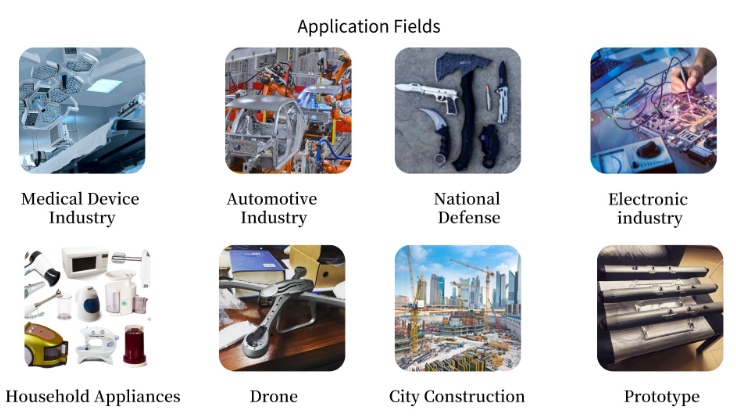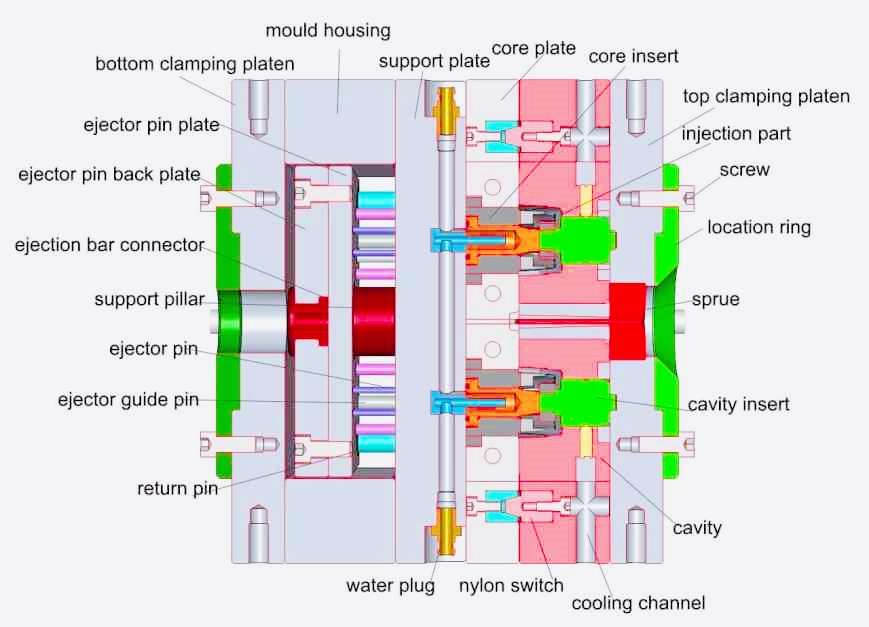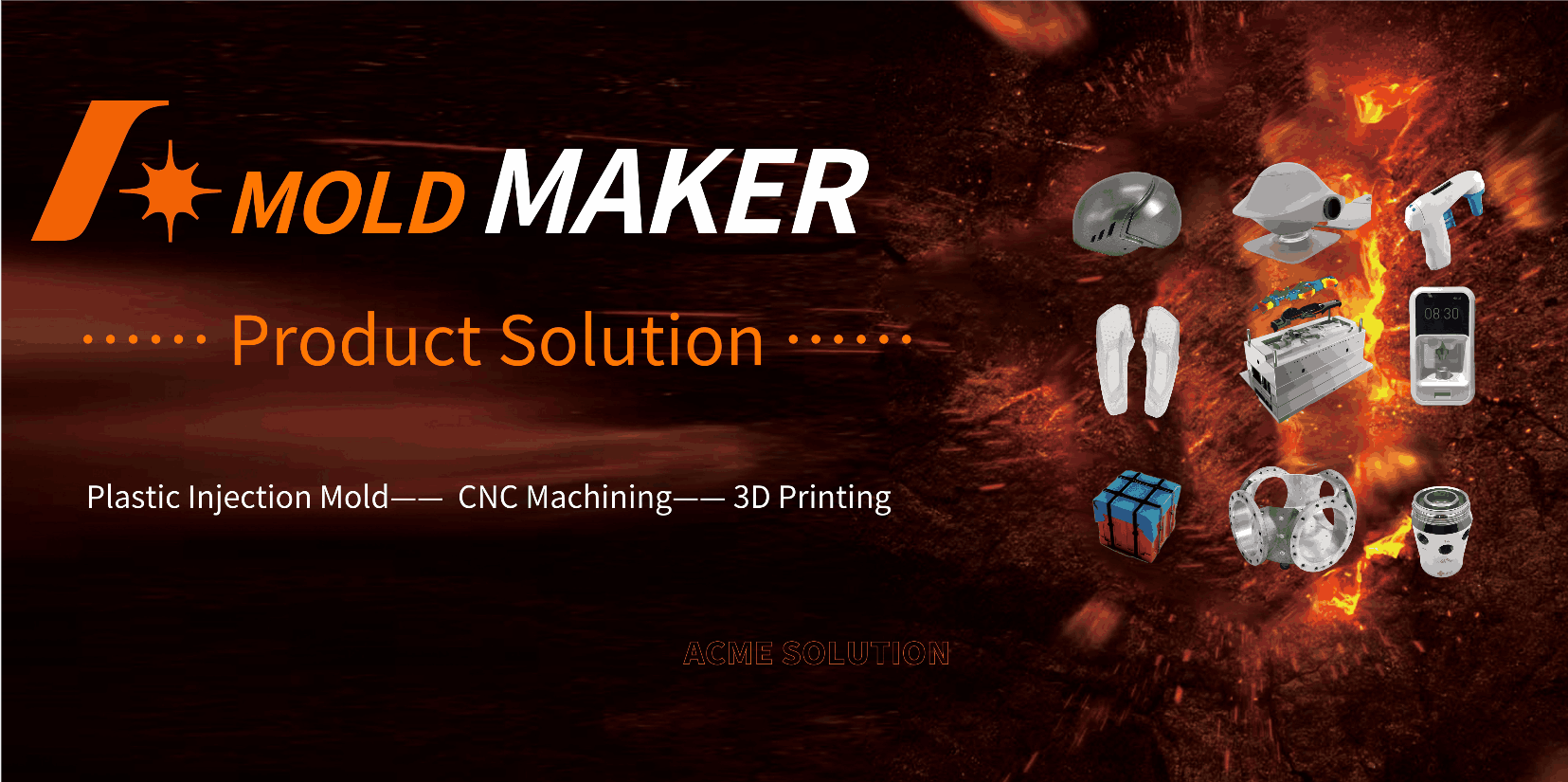What molds have done to our lives?
What molds have done to our lives?
There may be many people who think injection mold is very strange, but if it comes to plastic products, they may comprehend this word more clearly. Plastic mold is primarily used for the production of plastic parts in a mold, so this kind of mold can be used in different aspects of life?

Injection Molding Applications
It is the most preferred process for making plastic parts. Injection molding is used to create many things, including electronic housings, containers, bottle caps, automotive interiors, combs, and many other plastic items found in today's world. By using multi-cavity injection molds, several parts can be produced in each cycle, making injection molding ideal for high-volume production of plastic parts. Among its advantages are high precision, repeatability, large material selection, low labor costs, minimal scrap loss, and little need to finish the parts after they are molded.
Applications Include:
o Automotive & Motorcycle
o Medical devices
o Aerospace

The Term of Injection Molding

Boss
Refers to the round protrusions on plastic parts and molds (#2 in Figure 1 below)
Cavity
Refers to the upper half of the injection mold usually the show surface of the finished product but is mainly concave
Core
Refers to the side of the tool where the plastic part is injected from; also known as the bottom half of the tool
Core Outs
Refers to the portion of a part that is gutted out in order to achieve uniform wall thickness. This portion of the part has no end use function other than lightening the part and reducing warp
Draft
Refers to portion of injection molding part that has some taper to make it easier to remove from the mold. Generally all plastic components should be designed with draft where possible
Gate
Refers to where the plastic enters into the cavity of the mold. The two types of gates are as follows:
1. Automatically Trimmed Gates: Gates that incorporate features in the tool to break or shear the gate as the molding tool is opened to eject the part
2. Manually Trimmed Gates: Gates that require an operator to separate parts from runners during a secondary operation
Gibbs
Area of the custom injection mold that holds the slide down so the cam can actuate it
Hand Load
Aluminum or steel feature in a mold used to create undercuts in molded parts. They are manually removed from the mold during the part ejection process.
Heel
Refers to the portion of an automatic custom injection mold that keeps the slide in the forward position when the molding machine is closed on the mold
Horn Pin
Pin used to actuate the slide on an automatic injection mold
Line of Draw
The direction in which the two custom injection mold halves will separate from the plastic part allowing it to be ejected without any obstructions from metal creating undercuts
Ribs
Refers to thin bladed features on a part that are used for strengthening wall sections and bosses. Also, used to minimize warp
Runner
A channel cut into custom injection molds, in which plastic travels from the injection molding machine, through the sprue, through the runner and then through the gate ultimately filling the part
Shear
Refers to when plastic enters into the mold and the melt is maintained by friction produced by speed and pressure. Too much shear can cause the plastic material to burn, too little can cause the material to freeze off causing short shot
Short Shot
The result of a plastic part not filling completely, including some or all of the details
Shrink Rate
Refers to how much the plastic material will shrink after cooled. This % of shrink is added to the part before the mold is designed. Every plastic material has its own shrink rate ranging from .001 per inch to as much as .060 per inch. Although most fall in between .004" and .021"
Side Action
Term used for slides and/or hand pulls used in the injection mold build process
Sink Marks
Refers to areas of the molded part where it seems to be sunk in, due to un-uniformed wall sections, thick wall sections and rib/boss to thickness ratios being off
Slide
Area of the custom plastic injection molds that is used for creating undercuts. Required for automatic injection molds
Sprue
Channel that links the injection molding machine nozzle to the runner
Steel Safe
Refers to the amount of metal left on the mold in order to tweak in a dimension. For example, if you have an inside diameter that is supposed to be .500 you may leave the mold at .505 in case you get excessive shrink
Thin Wall Molding
The molding of plastic parts with wall thicknesses .005" to .060" thick
Undercuts
Refers to the portion of the designed component where a slide or hand pull is required to create holes, windows or clips that are not in the line of draw
Vestige
Material protruding from the gate area after gate runner has been removed from the injection molded part. This vestige is usually trimmed by the molding machine operator
Wall Thickness
Refers to how thick the cross section of the plastic part is
Warp
Refers to area of a injection molded part that distorts during cooling or molding, causing undesired results in the finished product. Usually caused by un-uniform wall sections
Parting Lines
A parting line is the line of separation on the part where the two halves of the mold meet.
Stress
The main enemy of any injection molded plastic part is stress.
Injection Molding Equipment
Injection Molding Machine: Injection Molding Machine, also known as the press, by the Hopper, injection plunger or screw-type plunger and heating device composition. The mold is clamped on the pressure plate of the molding machine, and the plastic is injected into the mold through the gate. Press according to the tonnage calculation, tonnage is the machine can be applied to the calculation of clamping force. This force keeps the mold closed during injection molding. Tonnage can range from less than 5 tons to 6,000 tons, although higher tonnage presses are rarely used. The total clamping force required is determined by the projection area of the custom section. This projection area is multiplied by a clamp force of 2 to 8 tons per square inch of the projection area. Based on experience, 4 or 5 tons/inch can be used for most products. If the plastic material is hard, more injection pressure is required to fill the mold, so more jig tonnage is required to keep the mold closed. The force required can also be determined by the size of the material and part used. The larger the plastic part, the greater the clamping force required.
Different Types of Injection Molding

· Co-injection (sandwich) molding
· Fusible (lost, soluble) core injection molding
· Gas-assisted injection molding
· In-mold decoration and in-mold lamination
· Injection-compression molding
· Injection molding of liquid silicone rubber
· Insert and outsert molding
· Lamellar (microlayer) injection molding
· Low-pressure injection molding
· Microinjection molding
· Microcellular molding
· Multicomponent injection molding (overmolding)
· Multiple live-feed injection molding
· Powder injection molding
· Push-pull injection molding
· Reaction injection molding
· Resin transfer molding
· Rheomolding
· Structural foam injection molding
· Structural reaction injection molding
· Thin-wall molding
· Vibration gas injection molding
· Water-assisted injection molding
· Rubber injection
After reading this article introduce the injection mold to you, I believe you already have a comprehensive understanding and understanding in the above problem. If you still have further questions related to the injection mold, welcome to our customer service hotline, looking forward to your feedback.





